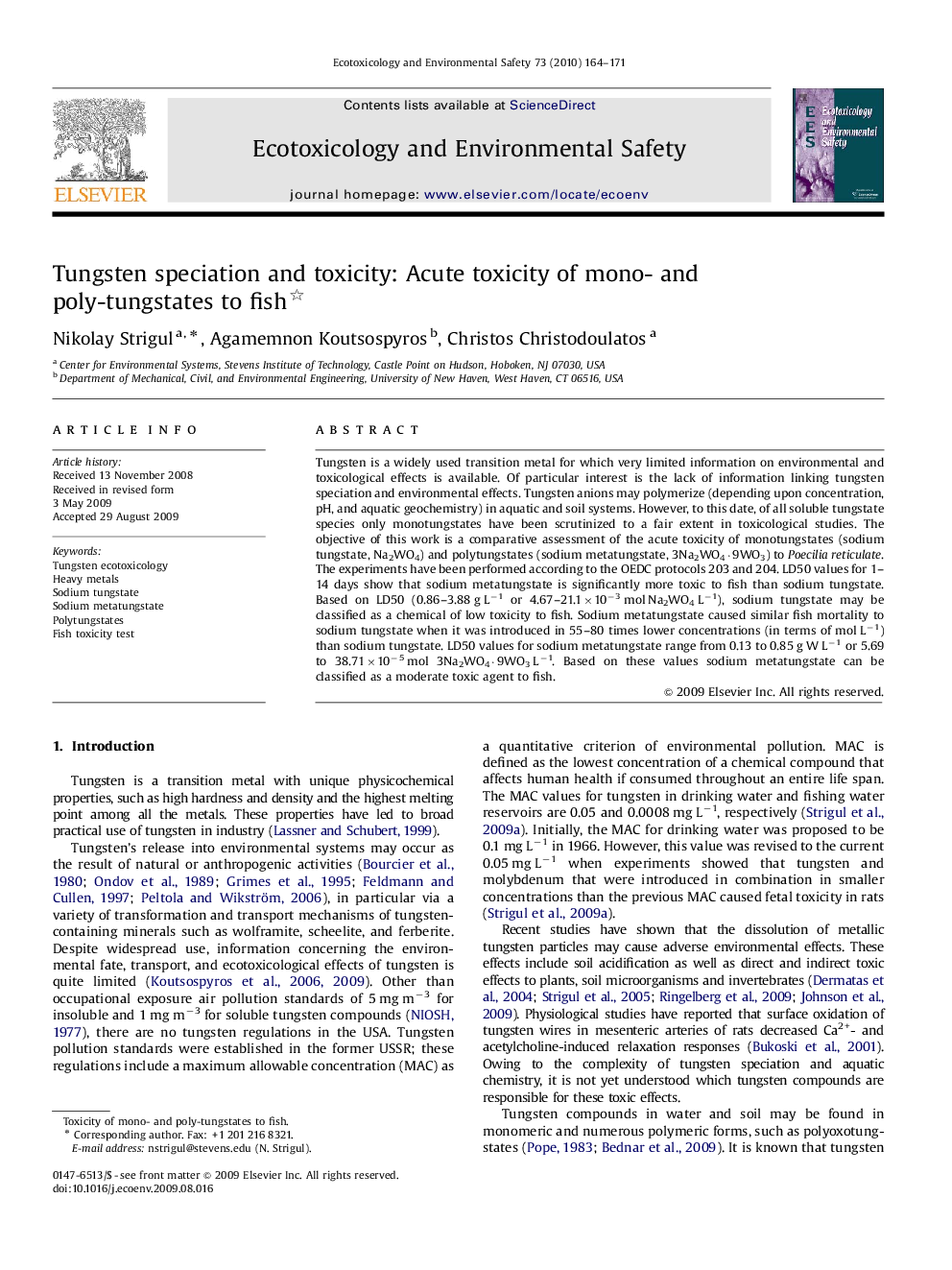| Article ID | Journal | Published Year | Pages | File Type |
|---|---|---|---|---|
| 4421841 | Ecotoxicology and Environmental Safety | 2010 | 8 Pages |
Tungsten is a widely used transition metal for which very limited information on environmental and toxicological effects is available. Of particular interest is the lack of information linking tungsten speciation and environmental effects. Tungsten anions may polymerize (depending upon concentration, pH, and aquatic geochemistry) in aquatic and soil systems. However, to this date, of all soluble tungstate species only monotungstates have been scrutinized to a fair extent in toxicological studies. The objective of this work is a comparative assessment of the acute toxicity of monotungstates (sodium tungstate, Na2WO4) and polytungstates (sodium metatungstate, 3Na2WO4·9WO3) to Poecilia reticulate. The experiments have been performed according to the OEDC protocols 203 and 204. LD50 values for 1–14 days show that sodium metatungstate is significantly more toxic to fish than sodium tungstate. Based on LD50 (0.86–3.88 g L−1 or 4.67–21.1×10−3 mol Na2WO4 L−1), sodium tungstate may be classified as a chemical of low toxicity to fish. Sodium metatungstate caused similar fish mortality to sodium tungstate when it was introduced in 55–80 times lower concentrations (in terms of mol L−1) than sodium tungstate. LD50 values for sodium metatungstate range from 0.13 to 0.85 g W L−1 or 5.69 to 38.71×10−5 mol 3Na2WO4·9WO3 L−1. Based on these values sodium metatungstate can be classified as a moderate toxic agent to fish.
